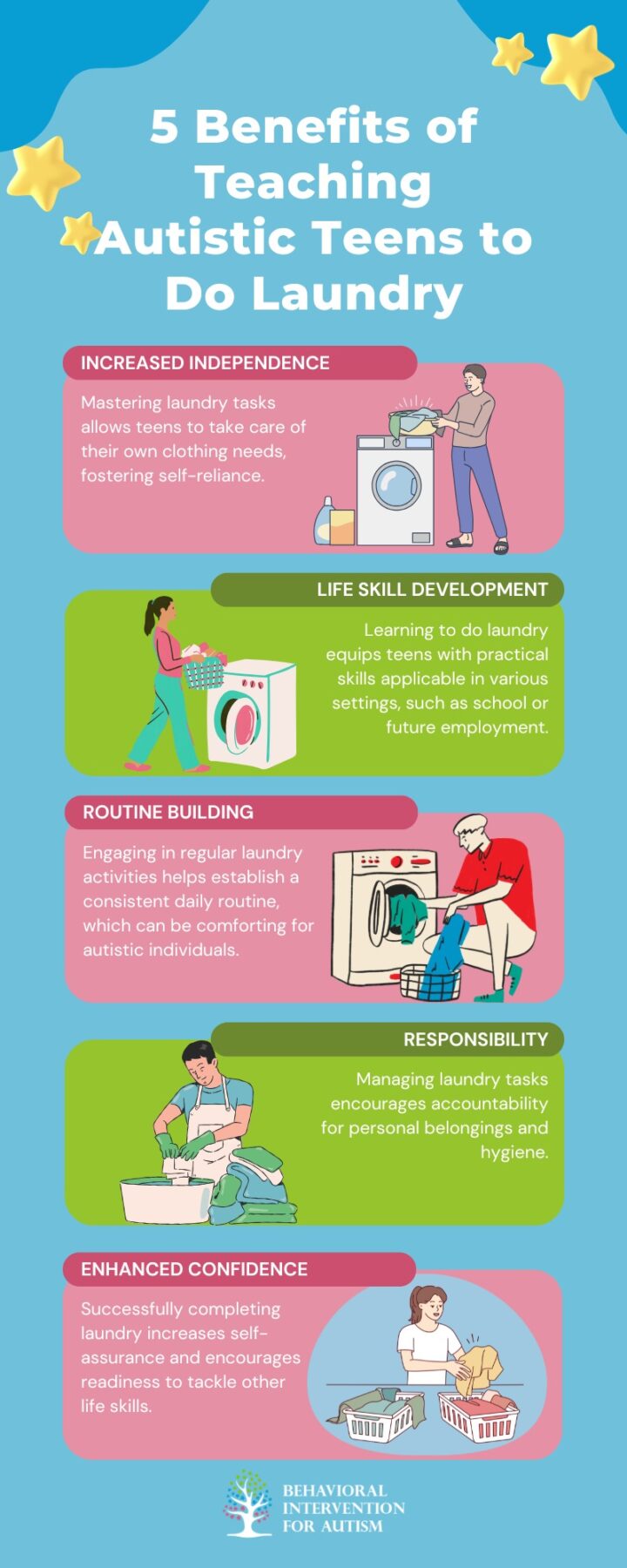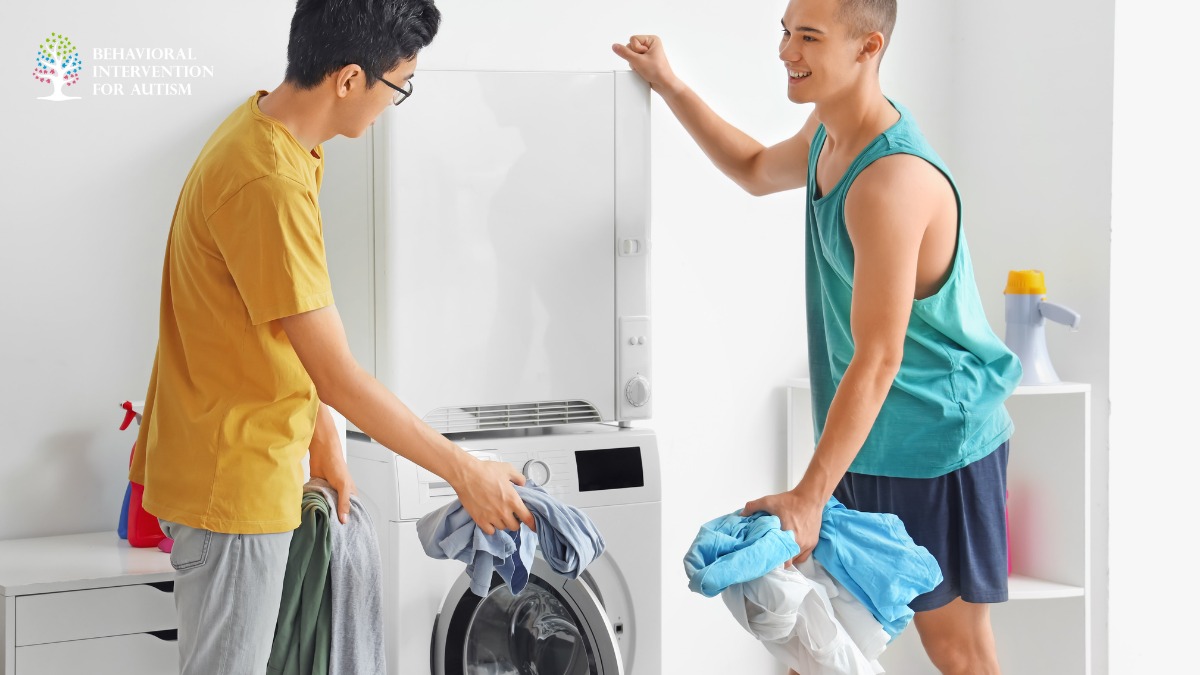
Table of Contents
Individuals with autism often face unique challenges when it comes to mastering daily living skills, particularly when it involves executive functioning. This includes tasks such as planning, organizing, and problem-solving, which can make everyday activities more complex. These difficulties can stem from various factors, including communication barriers, sensory sensitivities, and differences in cognitive processing. Below are some common challenges faced:
Challenge | Description |
Communication Issues | Difficulty in expressing needs or understanding instructions. |
Sensory Sensitivities | Overwhelm from sounds, smells, or textures, which can make tasks like laundry daunting. |
Executive Function Deficits | Struggles with planning, organization, and task completion. |
Rigid Thinking | Resistance to change or difficulty adapting to new routines. |
Social Interaction | Challenges in engaging with peers or accessing support. |
These challenges can create barriers to developing independence in tasks like doing laundry, which is essential for daily living.
Importance of Teaching Life Skills
Teaching life skills, such as doing laundry, is crucial for autistic teens. This not only promotes independence but also enhances self-esteem and personal responsibility. Below are some key benefits to consider:
Benefit | Description |
Increased Independence | Mastering laundry skills fosters self-sufficiency in managing personal tasks. |
Improved Confidence | Successfully completing tasks leads to a sense of accomplishment. |
Greater Life Satisfaction | Independence in daily tasks can enhance overall quality of life. |
Social Skills Development | Participating in household chores provides opportunities for social interaction and teamwork. |
Preparation for Adulthood | Learning daily living skills prepares individuals for future independent living situations. |
Introduction to Teaching Laundry Skills
Teaching laundry skills is an essential aspect of fostering independence in autistic teens. Gaining proficiency in daily living tasks, such as doing laundry, not only helps with personal care but also promotes self-esteem and confidence.
5 Benefits of Teaching Autistic Teens to Do Laundry
There are several advantages to teaching laundry skills to autistic teens. These benefits extend beyond simply completing a chore.

5 Considerations for Teaching Daily Living Skills
When teaching laundry skills, it is essential to take several factors into account to ensure the process is effective and supportive.
Consideration | Description |
Individual Learning Style | Each teen learns differently; it is vital to adapt teaching methods to meet their unique needs (visual, auditory, kinesthetic). |
Sensory Sensitivities | Be aware of any sensory sensitivities the teen may have related to smells, textures, or sounds associated with laundry. |
Step-by-Step Instructions | Breaking tasks into smaller, manageable steps can make the learning process less overwhelming. |
Clear Visual Supports | Provide clear, visual instructions that can simplify complicated tasks and reinforce learning. |
Patience and Encouragement | Building laundry skills may take time, so offering patience and encouragement is crucial throughout the learning journey. |
These benefits and considerations highlight the importance of fostering independence and life skills in autistic teens, ensuring a compassionate and effective approach to teaching them how to do laundry.
Preparing to Teach Laundry Skills
Establishing a solid foundation is critical when teaching autistic teens how to manage laundry tasks. It highlights the importance of a structured environment and visual support in enhancing learning.
Creating a Structured Environment
A well-structured environment plays a crucial role in minimizing distractions and fostering focus, especially for individuals who thrive on routine. Parents and caregivers can take several steps to establish an organized setting that enhances productivity and reduces stress.
- Designating a Laundry Space: One essential aspect of creating a structured environment is identifying a dedicated area for laundry tasks. A designated space ensures that laundry activities remain organized and free from unnecessary clutter. Keeping this area tidy can help streamline tasks and reduce distractions, making household chores more manageable.
- Scheduling Consistent Times: Establishing a regular laundry schedule is another effective strategy for promoting focus. Setting specific days and times for laundry helps build a predictable routine, reducing the likelihood of procrastination or last-minute stress. Consistency fosters better time management and allows individuals to plan their day more efficiently.
- Setting Up Clear Tools and Supplies: Having all necessary laundry supplies readily available contributes to a more structured environment. Essentials such as detergent, fabric softener, and drying racks should be organized in clearly labeled containers. This approach not only saves time but also minimizes frustration by ensuring that everything needed for the task is within reach.
Visual Supports for Clear Instructions
Visual supports are effective tools for enhancing understanding and memory retention. They help autistic teens follow instructions with clarity. Here are some visual support ideas:
Type of Visual Support | Description |
Step-by-Step Charts | Create a visual chart outlining each step in the laundry process, from sorting to folding. Include images or icons next to each step. |
Labeled Containers | Use labels on baskets for sorting clothes (e.g., “Whites,” “Colors”) to help identify categories. |
Picture Schedule | Develop a picture schedule that shows the sequence of tasks. This can include visuals of loading the machine, setting the timer, and transferring clothes. |
Utilizing visual aids can simplify tasks and enhance comprehension, making it easier for teens to engage in the process of doing laundry.
Teaching Step-by-Step Laundry Tasks
Teaching autistic teens to do laundry involves breaking down the process into manageable steps. Each task can be approached systematically to encourage understanding and independence in completing laundry.
Sorting Laundry
Sorting laundry is the first step and is vital for preventing color transfer and maintaining clothing quality. Here are some basic categories for sorting:
Sorting Category | Description |
Colors | Dark, light, and bright clothing |
Fabric Type | Delicates versus regular fabrics |
Temperature Requirements | Cold vs. hot water items |
Special Care Items | Clothes needing special attention |
To teach this skill, display visual aids with examples of each category. Encourage the teen to practice by filling different baskets labeled for each category.
Using the Washing Machine
Once the laundry is sorted, the next task is using the washing machine. Follow these steps:
- Load the Washer: Place sorted items into the washing machine.
- Add Detergent: Measure the appropriate amount of detergent based on load size.
- Select Settings: Choose the right settings for the type of load (e.g., cold for colors, hot for whites).
- Start the Machine: Push the start button and wait for the wash cycle to complete.
Consider using a visual checklist to help the teen remember each step.
Drying and Folding Clothes
After washing, the next tasks are drying and folding clothes. This step can be broken down as follows:
- Transfer to Dryer: Move washed clothes to the dryer or hanging area.
- Select Drying Settings: Choose appropriate heat settings for fabric types.
- Start the Dryer: Press the start button on the dryer.
Once clothes are dry, folding involves:
- Sorting Dry Clothes: Place similar items together (e.g., shirts, pants).
- Folding Techniques:
- Fold shirts in half to create a neat fold.
- Stack pants and fold in half once.
Using verbal guidance, visual prompts, and hands-on practice will help reinforce these skills. By teaching these tasks methodically, the teen will gain confidence and independence in managing laundry.
Empowering Independence Through ABA Therapy
Teaching autistic teens to do laundry fosters independence and builds essential life skills. We take a structured, step-by-step approach that makes learning manageable and engaging. By incorporating visual support, clear instructions, and hands-on practice, we help teens feel confident in handling laundry tasks. Our team at Behavioral Intervention for Autism provides personalized support, ensuring each teen progresses at their own pace. Through our dedicated approach, we make daily living skills more accessible. If you’re looking for expert guidance, explore how our compassionate and effective ABA therapy in Florida can support your child’s growth—reach out to us today!
Sources:
- 9 Common Obsessions of Children With Autism You Should Know - February 25, 2025
- What is Neurodiversity? A Guide to Embracing Differences - February 25, 2025
- Understanding Hyperfocus in Autism: What It Means and Why It Happens - February 25, 2025

